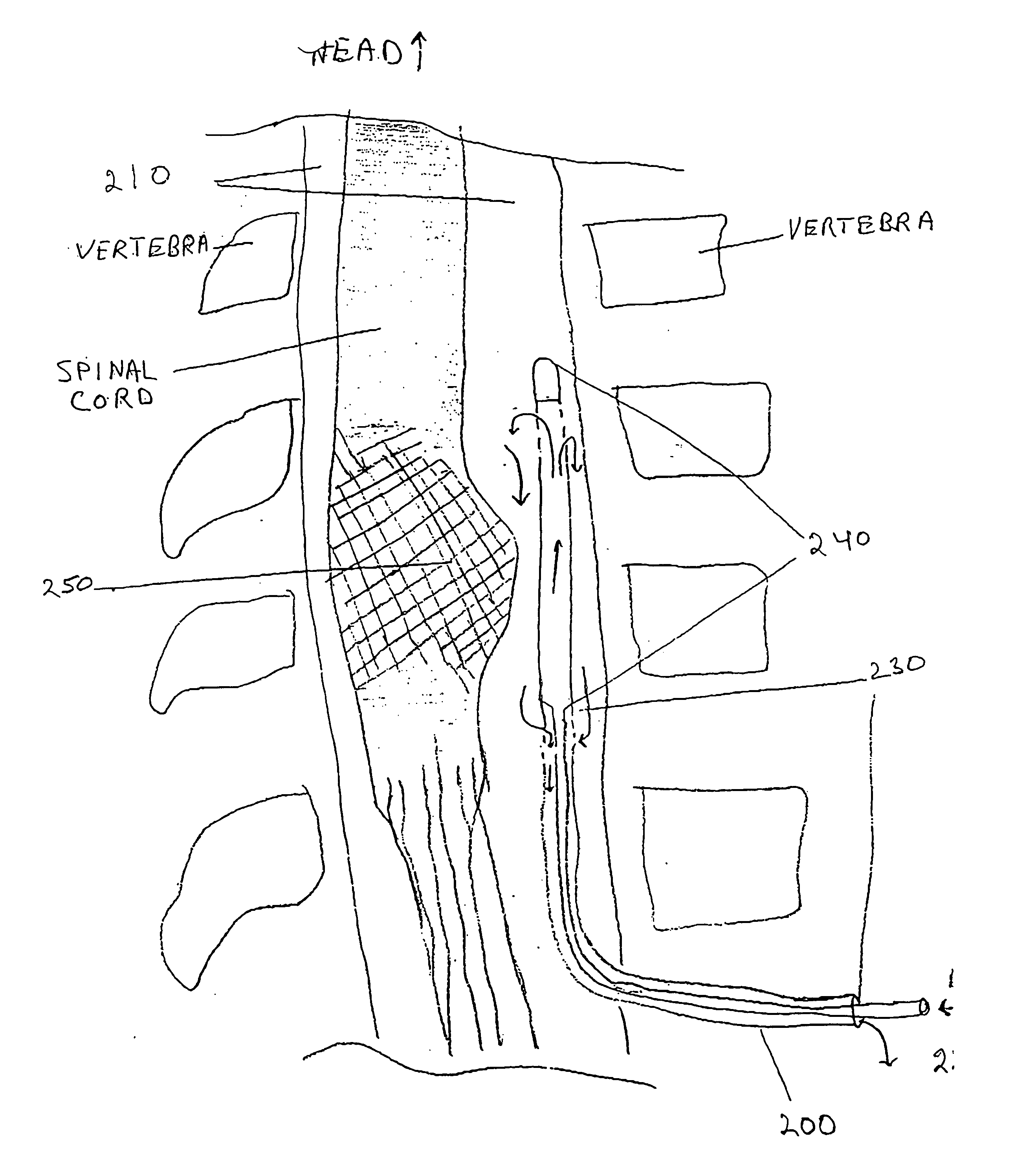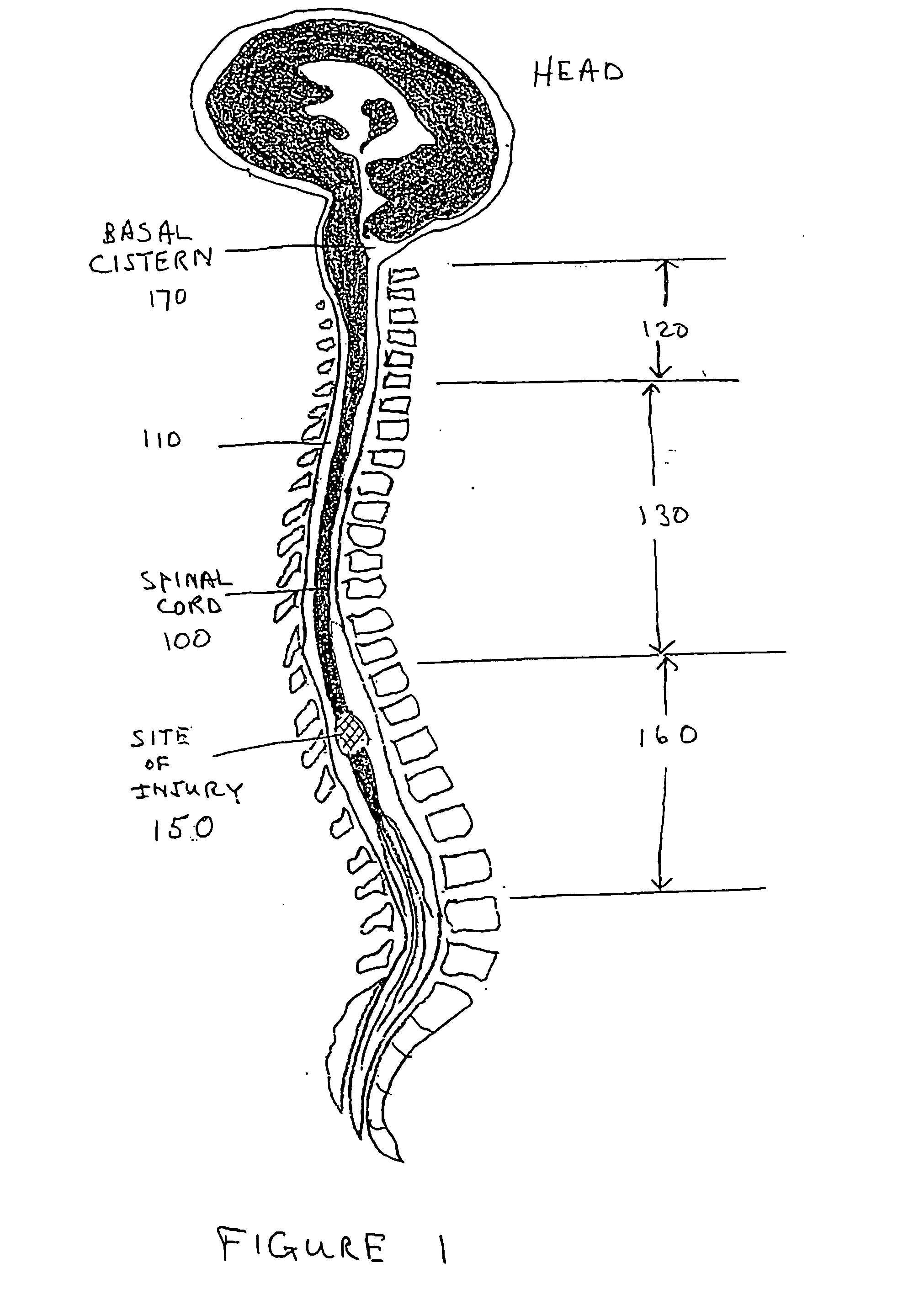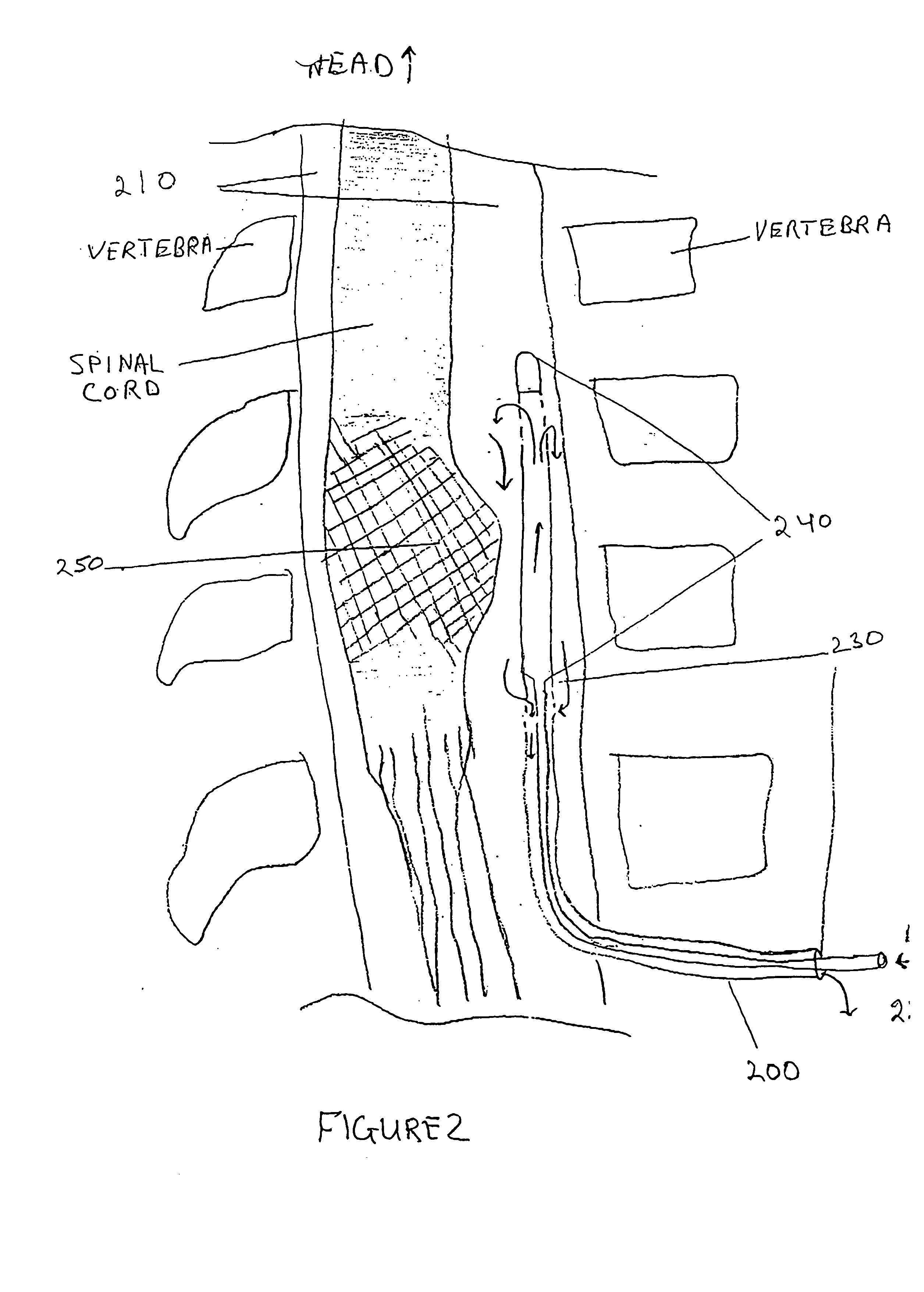Subarachnoid spinal catheter for transporting cerebrospinal fluid
- Summary
- Abstract
- Description
- Claims
- Application Information
AI Technical Summary
Benefits of technology
Problems solved by technology
Method used
Image
Examples
first embodiment
of the Present Invention
[0023] The present invention includes a kit for safely accessing and fluidly communicating with the subarachnoid space. The kit includes a catheter suitable for entering the lumbar space of the spine and advancing up the subarachnoid space in the spine. The catheter 300, as shown in FIG. 3, is an elongate member having a proximal end and a distal end.
[0024] The elongate tubular member has a size and flexibility suitable for entry into the subarachnoid space. That is to say, the elongate tubular member has a size and flexibility allowing it to be manipulated in the subarachnoid space without causing significant trauma to the neural tissue. The elongated tubular member 300 is comprised of an outflow section 310, an extended inflow section 320 (for flow into the CSF pathway), and a tip 330. A soft polymeric tip plug 330 helps to minimize trauma to neural tissue upon catheter insertion.
[0025] The dimensions of catheter 300 in an exemplary embodiment are as foll...
examples
[0043] A catheter in accordance with example 7 listed in the table below is designed to be compatible with a 14 gauge extra thin walled Touhy needle, limiting the outside diameters of the outflow and extended inflow sections to 1.68 mm. The length of the outflow section including the outflow fenestrations is 215 mm. The length of the extended inflow section including the inflow fenestrations is 120 mm useful for treatment of injury to the thoracic spine.
[0044] The outflow section is coaxial with the outflow lumen occupying the outside annular space and the inflow lumen occupying the central circular space. The outer wall section is 0.22 mm thick and contains a metal (Inox) coil that extends from the proximal end of the section to the outflow fenestrations. The inner partitioning wall is 0.13 mm thick and extends the entire length of the section. (The coiled outer wall provides the radial strength of resist kinking or crushing. The inner wall provides the longitudinal strength to re...
PUM
 Login to View More
Login to View More Abstract
Description
Claims
Application Information
 Login to View More
Login to View More - R&D
- Intellectual Property
- Life Sciences
- Materials
- Tech Scout
- Unparalleled Data Quality
- Higher Quality Content
- 60% Fewer Hallucinations
Browse by: Latest US Patents, China's latest patents, Technical Efficacy Thesaurus, Application Domain, Technology Topic, Popular Technical Reports.
© 2025 PatSnap. All rights reserved.Legal|Privacy policy|Modern Slavery Act Transparency Statement|Sitemap|About US| Contact US: help@patsnap.com



